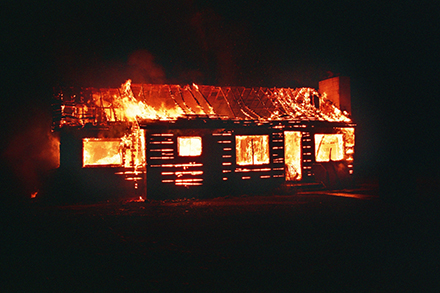The Australian Institute of Architects has welcomed the public release of the report from the Royal Commission into National Natural Disaster Arrangements and called for its recommendations to be swiftly implemented. Source: Timberbiz
Institute CEO Julia Cambage said that while elements of the report would require longer term reform, governments needed to act urgently on a number of safety measures including upgrades to standards and the use of shelters and water spray systems in high-risk areas.
“This Royal Commission has produced incredibly valuable work in the wake of last summer’s catastrophic fires,” Ms Cambage said.
“But as the report highlights, there is no time to waste, both in preparing for the next fire season and ensuring we build back better from the last one.
“We cannot afford a repeat of the unprecedented damage wreaked on human lives, natural habitats, property and wildlife,” she said.
“The Royal Commission has noted key evidence that will save lives and deliver a more resilient built environment that is better equipped to face future challenges.
“They identified the need to evaluate the National Construction Code to include making buildings more resilient to natural hazards as a specific objective, as well as revisiting the effectiveness of the Australian Standard AS3959-2018: Construction of buildings in bushfire-prone areas.
“The Royal Commission recognised this standard is out of date and based on 2009 Forest Fire Danger Index data rather than responding to the much higher danger levels being experienced a decade later,” Ms Cambage said.
“While positive steps, we argue that both recommendations need to go further, faster.
“With some 5,900 buildings destroyed and communities anxious to rebuild, governments have a limited window of time to effect reforms that will ensure a higher standard of more resilient construction.
“We can’t have people rebuilding to a standard that demonstrably is not fit-for-purpose.
“Nor can we fail to address the huge legacy issue and clearly identified risk presented by the 380,000 properties currently exposed to ‘high natural hazard risk’ which the Royal Commission’s report says ‘may grow to 735,000 by 2100…in the absence of any new houses being built, due to an increasing frequency and severity of hazards.’
“Supporting homeowners to install water spray systems or accredited bushfire bunkers where appropriate are relatively simple measures that are proven to enhance bushfire safety.
“The Institute has also advocated for these actions as part of a valuable economic stimulus opportunity in the context of the COVID-19 recovery,” she said.
“Of equal importance is providing evidence-based data to better inform people’s choices and assessment of risk as they look to re-establish their homes and businesses.”
Institute member and expert practising architect Mr Nigel Bell, who gave evidence on behalf of the Institute, noted that due to the scale and severity of the mega-bushfires we are now seeing, improvements to the National Construction Code and relevant standards were not enough on their own.
“The experience of the 2019-20 bushfire season suggests that there is no such thing as a bushfire proof house, and the legacy of our existing built environment suggests we are unable to guarantee the safety of occupants in buildings during bushfire.
“This means we need to consider other approaches like the use of private and public shelters, such as they have done for decades in the United States as protection from hazards like wildfires and tornadoes.”
Ms Cambage said the Institute accepts the science on climate change and the need for a proactive response, including a commitment to net zero emissions by 2030.
“Climate change is the key factor contributing to the disruption of human societies through extreme weather events and natural disasters, and as the most recent bushfire season has reminded us, Australia is not immune to this new reality,” Ms Cambage said.
“It is clear that these impacts will escalate in the future and urgent action is required to both reduce greenhouse gas emissions to limit the severity of climate change and to proactively plan for a more hostile climate.
“The Commissioner has acknowledged that ‘what was unprecedented is now our future’ which will see natural disasters become ‘more frequent and more severe’.
“Resilience must include a commitment to net zero emissions in our buildings and responsiveness to our new climate reality because it is critically important to ensure that all rebuilding projects following natural disasters look to enhance the standard of our built environment.
“This has the added benefit of helping to mitigate the emerging issue of energy poverty and while also reducing vulnerability to future disasters.
“Built environment professionals have a critical role to play in improving the resilience and adaptation of Australian society to changing climatic conditions and we look forward to supporting a timely response from government to this landmark report.”






